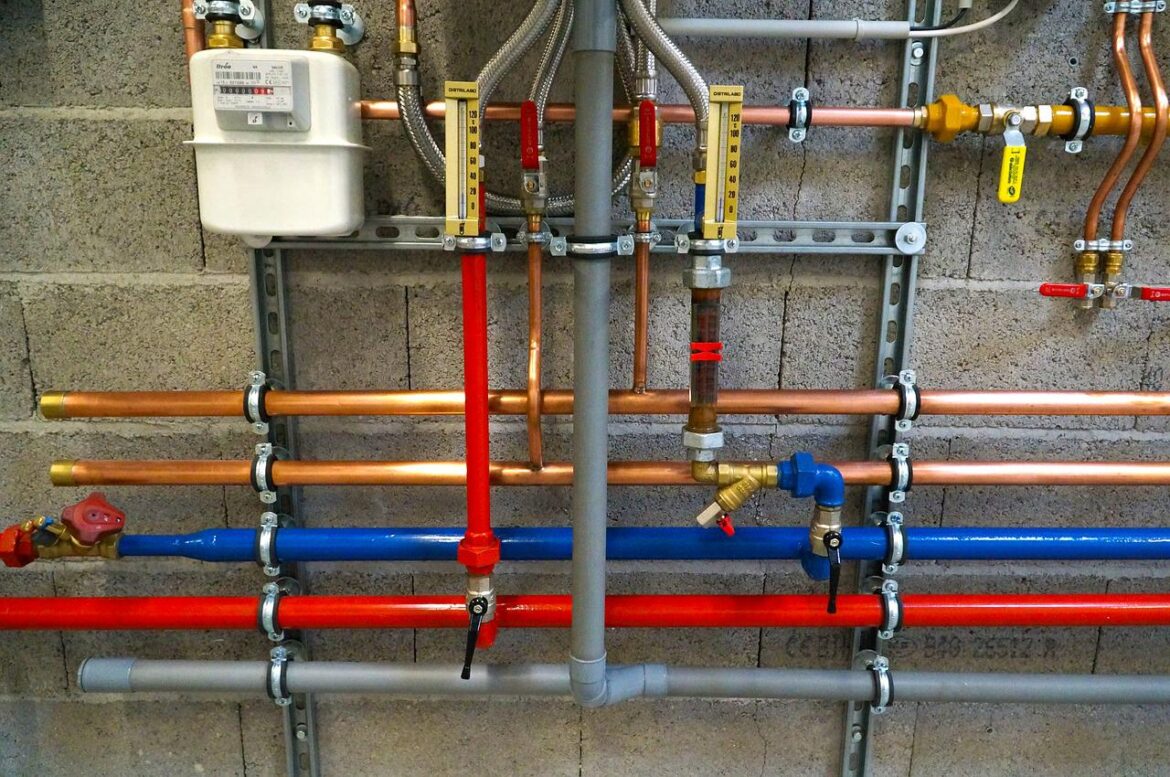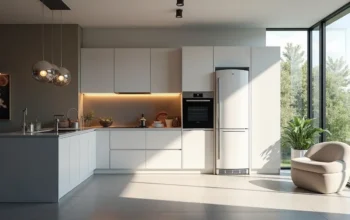
Installing plumbing is one of the most crucial parts of building a new home. A common question is what is the cost of plumbing a new house? For good reason, it’s costly. When installing plumbing for your home, it is important to know the cost of plumbing a new house.
So when you come up with ideas for your new bathroom or kitchen, you will know how much to spend on the plumbing. Learn more about it according to the CDC and why it’s important.
Keep reading this article to know how much it costs to plumb a new house.
Contents
- 1 How Much Does It Cost To Plumb A New House?
- 2 Factors That Influence The Cost To Plumb A New House
- 3 How Much Does It Cost To Plumb A New House With PEX Piping?
- 4 The Advantages Of Using PEX Piping
- 5 What Are The Disadvantages Of Using PEX Piping?
- 6 How Much Does It Cost To Plumb A New House With Copper Piping?
- 7 The Advantages Of Using Copper Piping
- 8 What Are The Disadvantages Of Using Copper Piping?
- 9 Conclusion
How Much Does It Cost To Plumb A New House?
A new house’s plumbing costs an average of $7,500.
You can make it as low as $1,500, depending on your budget.
But the cost can reach $15,000 under certain conditions.
The amount will depend on how big your house is and how many bathrooms you have.
For example, for a 2,300-square-foot home with 2 bathrooms, the average plumbing cost is $11,500.
As a general rule, you should budget $4.50 per square foot for plumbing costs.
Factors That Influence The Cost To Plumb A New House
There are several elements that influence the cost of plumbing a new home.
They are as follows:
- Plumbing materials
- The location of the pipes
- Plumber’s hourly wage
- Number of bathrooms
Let’s get deeper into these factors
1. Plumbing Materials
The type of plumbing material you use for your pipes can affect the cost to plumb a new house.
For example, if you choose copper as the material for your plumbing, the overall cost will be high because copper is the most expensive material for plumbing.
On the other hand, other materials such as PVC or PEX are much more affordable.
The cost to plumb a house can increase if you use an expensive material, especially if your property needs a lot of piping.
Using a large number of copper pipes will be significantly more expensive than using a large number of PVC or PEX pipes.
If you consider choosing more affordable pipes such as PVC or PEX, it may reduce the cost of your home plumbing.
2. Location Of The Pipes
The cost of plumbing your house will be higher if it’s more complicated to connect your bathroom to the sewer or septic tank.
When the plumber needs to do more work and time, the plumbing cost will increase.
Sometimes complicated work requires specific tools to get access to certain areas of your property in order to lay in the plumbing. AC Plumbing Brisbane or other local plumbers can give you an estimate of their price based on the tools they think they’ll need and how easy the job will be.
The location of the pipes also impacts how many supplies will be required by the plumber for the plumbing work.
For example, if your house needs more pipes for the plumbing, you will need to spend more money.
You should make the bathroom accessible to lower the expense of your plumbing installation.
Placing the bathrooms on the edges of the house will make them more accessible and make the plumbing work easier.
To reduce the number of pipes required, try to locate the bathrooms closest to the sewage line or septic tank.
3. Plumber’s Hourly Wage
Some plumbers charge an hourly rate to work on your plumbing.
The plumber’s hourly rate is one of the factors to consider when determining the cost of plumbing a new house.
A plumber who charges by the hour will be more expensive than one who charges a flat rate if you have a large project.
On the other hand, if the plumbing work is simple, a plumber who charges by the hour may be a better value than one who offers a flat cost.
When selecting a plumber to plumb the new house, you should consider both options. A reputable company such as pm247 plumbers will be upfront and fair regarding their pricing.
Ensure you are provided with an estimate for your project before making any commitments.
You should also ask them to estimate the project’s duration.
After that, you can compare the hourly price to the flat rate based on how many hours they predict the project to take.
4. Number Of Bathrooms
The more bathrooms your house has, the mo expensive the plumbing installation will be. A professional plumbing service in San Antonio or a place near you can ensure that your plumbing system is installed efficiently and up to code, helping you avoid costly repairs in the future. Regular maintenance and timely inspections can also extend the lifespan of your plumbing system and prevent unexpected issues.
Each plumber will provide you with a quote based on the number of fittings in each room.
Every fitting requires the installation of a pipe.
A home with one or two bathrooms and a kitchen will be substantially less expensive to plumb than one with four or five bathrooms and a kitchen.
Other fittings that require plumbing will also increase the cost.
For example, if you want to add a hot tub or outdoor kitchen area, these additions require plumbing installation too.
The more fittings you have in your home, the more expensive the job will be.
Limiting the number of bathrooms in a new home can help you save money on plumbing.
You might want a bathroom on each floor instead of a bathroom in every corner to save the plumbing installation cost.
How Much Does It Cost To Plumb A New House With PEX Piping?
PEX installation costs 50 cents to $2 per square foot.
This works up to $1,250 for 50 cents PEX on a single bathroom in a 2,500-square-foot home.
If you want to add a second bathroom, double that estimation.
A single bathroom is estimated to cost $5,000 on average for a 2,500-square-foot home.
And based on the $2 estimate, a single bathroom costs $5,000 on average for a 2,500-square-foot home.
Given that PEX is one of the less expensive options, imagine how costly it is to use copper pipes.
The most significant cost difference between PEX and copper pipes is the labor.
The cost of PEX piping is determined by the hourly wage or flat rate charged by the plumber.
The price of the pipe itself is not really significant because it’s relatively inexpensive.
Many plumbers are now using PEX as the material to plumb a new home.
PEX is relatively new, and it has a few benefits as well as disadvantages as described below.
The Advantages Of Using PEX Piping
One of the most advantageous characteristics of PEX pipe is, unlike copper pipes, it does not freeze.
At a very low temperature, the water trapped in copper pipes can freeze and become solid ice.
When the solid ice moves through the pipe, it can cause blockage.
As a result, the pipe can explode because of the pressure.
But when you use PEX pipes, the problem won’t happen.
PEX is not a stiff metal.
It’s more of tubing and the material prevents the pipes from freezing.
Therefore, it does not burst or leak due to freezing.
PEX is also resistant to corrosion.
This is another benefit of using PEX piper for plumbing.
The water inside the pipe can cause certain materials to corrode over time
As a result, the pipes can leak and degrade.
The corrosion also releases rust into your water.
PEX materials are safe from corrosion
So you don’t have to worry about the corrosion leak and rust in your drinking water.
The next advantage of using PEX piping is that it is affordable and easy to install.
PEX pipes are made of flexible plastic materials.
Its flexibility makes it easier for the plumber to install the pipe through the wall.
PEX pipes can even curl around corners without requiring the opening of walls.
And it takes less time to install PEX because it is so simple to use.
As a result, using PEX pipes can make the plumbing installation so much cheaper.
In addition, the plumber will require to drill fewer holes in the wall when installing PEX pipes.
So when you need to fix or replace your plumbing, there will be fewer damage occur to your walls.
PEX also has the cool feature of being able to connect to a PEX manifold.
This functions as a circuit breaker for your plumbing.
Each PEX tube connects to manifold fittings.
The manifold lets you turn off the water supply to a specific fixture.
So if a plumber is needed to repair a specific fixture, you do not need to turn off the water to the entire house.
Instead, you can only turn off the specific fixture that needs fixing.
Another advantage of PEX plumbing is that it retains heat.
You might spend some time at the sink waiting for the water to heat up before using it.
Using PEX pipes can save up your waiting time because it heats up faster.
As it heats up faster, it requires less energy from your water heater.
This can save you money on water expenses and usage while also extending the life of your water heater.
What Are The Disadvantages Of Using PEX Piping?
Although there are numerous benefits to adopting PEX piping, there are some drawbacks too.
One of the problems derives from the fact that it is new material.
Experts are unsure about its long-term impacts on health and safety because it hasn’t been on the market or in usage for very long.
They are also unsure about how long it will last, the type of degeneration it will experience, and any other issues it may face as it ages.
Choosing PEX pipes in your home means you become a participant in the experiment.
You will be testing to see how PEX pipes perform after a long time of use.
Another disadvantage is that rodents can chew the PEX tubes.
When you use copper pipes, rodents can’t chew on them because the metal is too strong.
But it doesn’t apply to PEX pipes.
PEX material is soft and easy to be chewed through by rodents.
If you frequently have mice or other rodents in your home, you may have a serious problem when using PEX pipes.
Rodents can get inside your wall and chew on the PEX pipes.
The chew marks can cause holes in the tubing and leakage.
So if you use PEX pipes, make sure that you don’t have rodent problems in your house.
The next disadvantage is that PEX can be damaged by chlorine.
The PEX material can lose its cohesion when it’s exposed to chlorine.
Some detergents and cleaners contain chlorine.
So when you use PEX pipes, dumping some detergents or cleaners down the drain can cause problems for your pipes.
Another issue with using PEX is that it reacts with the sun.
If PEX is exposed to sunlight before installation, it might degrade.
This is due to the nature of the materials used to create the PEX pipes.
This situation requires the plumbers to conceal it when delivering it to your home.
Although it’s not a major issue for skilled plumbers, if a plumber is having a bad day or is unfamiliar with PEX, it could have an impact on how smoothly your plumbing installation goes.
Another issue with PEX tubing is that it is porous.
If PEX flows underground and comes into contact with groundwater, this is a concern.
Your groundwater can be contaminated by anything.
Contaminants can infiltrate your groundwater from runoff from industry, vehicle washing, surrounding farms, and even gas or oil spills.
Because PEX is permeable, it can absorb impurities and allow them into your drinking water.
If you don’t utilize a filter, you can end yourself drinking gasoline or other unpleasant substances.
How Much Does It Cost To Plumb A New House With Copper Piping?
Copper piping costs between $2 and $5 per square foot.
That’s $5,000, to begin with for a 2,500-square-foot home with one bathroom.
That means the $5 price point equals $12,500.
Copper plumbing is definitely more expensive than PEX.
But using copper pipes has a few advantages.
These advantages and qualities may make the additional cost of copper worthwhile.
The Advantages Of Using Copper Piping
The history of copper pipes is one of the primary reasons homeowners prefer them over other materials.
A few decades ago, people started to use copper pipes to replace steel pipes.
Experts know that it is safe to use and transfer potable water to the house because Copper pipes are also extremely durable.
It has a lifespan of 50 to 70 years.
While installing copper pipes is costly, you can rest assured that you will not need to replace them for several decades.
If you sell the house within that time frame, you may not need to replace them at all.
Copper pipes are also made to last.
Because copper is a metal, it can withstand a lot of stress.
It is not a soft plastic so it won’t rip easily although you poke holes through it.
Another benefit is that it does not leach.
Some other materials can leach chemicals, allowing them to enter your drinking water.
The water that flows through your copper pipes is free of contaminants.
If it’s contaminated, you know it came from the source of the water, not the pipes.
Copper pipes are also light and portable.
Although they’re not as flexible as PEX tubing and require a bit more delicacy to install, they’re simple to work with.
Plumbers may deliver multiple pipes inside the residence in a single vehicle without having to worry about sun exposure.
Another advantage of copper pipes is that they are fire-resistant.
If an electrical fire breaks out in your home, it will have no effect on your plumbing.
What Are The Disadvantages Of Using Copper Piping?
Despite their advantages, there are a few disadvantages of copper pipes that you should know to help you decide whether to use them or not.
The primary downside is the cost.
Copper is and will always be a costly metal.
Because copper is pricey on its own, you’ll also need to consider labor costs.
This might cause the cost of a plumbing project on a new home to rise.
Another issue is that copper pipes might become frozen.
Copper is susceptible to the cold and can retain it.
When it freezes, it can turn the water inside the pipe into solid.
This can lead to obstructions and pressure buildups, causing the copper pipe to rupture.
It will be expensive to repair it, especially if you also have to deal with water damage.
Copper pipes can also be degraded by some acids.
So they work well with acidic water.
Copper can also be degraded by certain chemicals such as formaldehyde.
Your copper pipes may degrade prematurely if your groundwater is acidic.
Another issue with copper pipes is that it’s difficult the detect leaks.
When a copper pipe leaks, it usually happens slowly.
You might not detect the damage until it is severe.
Repairing leaking copper pipes can be costly.
The tendency of copper pipes to spark fires is another disadvantage.
Even though they’re fire-resistant, copper pipes can start fires.
When the pipe becomes hot, it can burn any wooden beams it comes into contact with.
If the heat continues, the wood may catch fire.
You might not even notice the fire until it’s too late.
Copper tubing offers several advantages over PEX tubing, but it also has disadvantages that many homeowners may not choose it.
Conclusion
Limiting the number of bathrooms in your house and using PEX pipes are solutions to keep the cost of plumbing a new house as low as possible.
But if you have a higher budget, copper pipes may be worth considering due to their performance and extended lifespan.
To estimate the precise plumbing costs of your new home, consider the examples and factors listed above.



